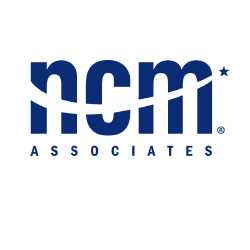Technician Pay Plans

Below are some thoughts on what overpaying a technician can do to your profitability, and a suggestion on how to set up a simple, effective pay plan that will protect your bottom line.
Let’s start with what we know: To run a profitable service department, your gross margins (i.e. the difference between what you collect from the customer and what you pay the technician) must be above 70% on retail, warranty, and internal labor, preferably 72-75%. These margins can be weak if discounting is rampant, pricing is faulty, or technician pay plans are not set up properly. Remember, anytime you pay guarantees, bonuses, or other perks to your technicians, your gross margins deteriorate.
Next, we can connect this benchmark to a pay plan by analyzing the industry’s standard practice of flat rate pay. The most productive shops will always utilize a flat rate pay structure, essentially making the technician an independent contractor who is paid on what they sell. By making the technician’s compensation directly tied to their output, bosses ensure productivity and each technician gets the opportunity to be paid well if they are willing to work. The major issue with this is that flat rate pay is based on dollars, so a technician is paid per hour produced, regardless of what revenue that hour brought in from the customer. This can cause huge drops in gross margin when advisors discount, expensive techs perform low-end jobs, or variable labor rates are not kept up to date.
To avoid this, why not pay the technicians a percentage of the revenue that they generate, similar to how you pay most productive personnel in the dealership? In fact, you can copy the tier structure paid to your salespeople or F&I manager to encourage high levels of productivity for technicians. [For example, you could pay 26% at 7-8 hours produced per day, 28% at 8-10 hours produced per day, and 30% at 10+ hours per day.]
In doing this you accomplish many things:
- Simplify your objectives: Technicians and service advisors often have such complex pay plans they spend half of their productive hours trying to figure out how much money they have made this month. This helps cut through the clutter and aligns their focus with your primary goal—selling labor.
- Make your strategy accessible and transparent: By implementing this pay plan, you will undoubtedly have tough discussions with your team; after all, 30% of an already discounted oil change is not going to be very much money to a seasoned veteran. But if your strategy is presented properly, your technicians will be forced to treat each oil change as an opportunity that only pans out with an upsell. Or they stop doing oil changes and you can pass them to low-wage lubers who should have been getting the job in the first place.
- Build accountability: Not only will this pay plan encourage technicians to look for more profitable labor (see our post on Variable Labor Rates if you need a refresher), but it will clean up other processes as well. Have a discounting problem? Not once a technician shares in the pain. Trouble getting advisors to use your high-end labor rate? Technicians will make sure they bill properly. Having more watchdogs is not necessarily a bad thing in a well-run shop.
- Protect the bottom line: With a simple performance-based pay plan, you can guarantee your margins will stay intact. Nothing else should account for your cost of sales in the service department other than technician wages; so, if you pay 30%, you keep 70%. Simple.
Of course, there will be countless other issues in your daily operations that this change will not directly address. There will still be dispatching issues, internal squabbles, feelings of inequality, etc. You will need to keep open lines of communication, schedule regular meetings, and maybe even appoint senior techs as representatives to ensure swift resolution when issues are identified. But this is all important in any shop, regardless of the pay plan. By simplifying the pay structure and tying compensation directly to revenue, you will have much more time to spend working on issues other than maintaining margins and calculating technician compensation.
